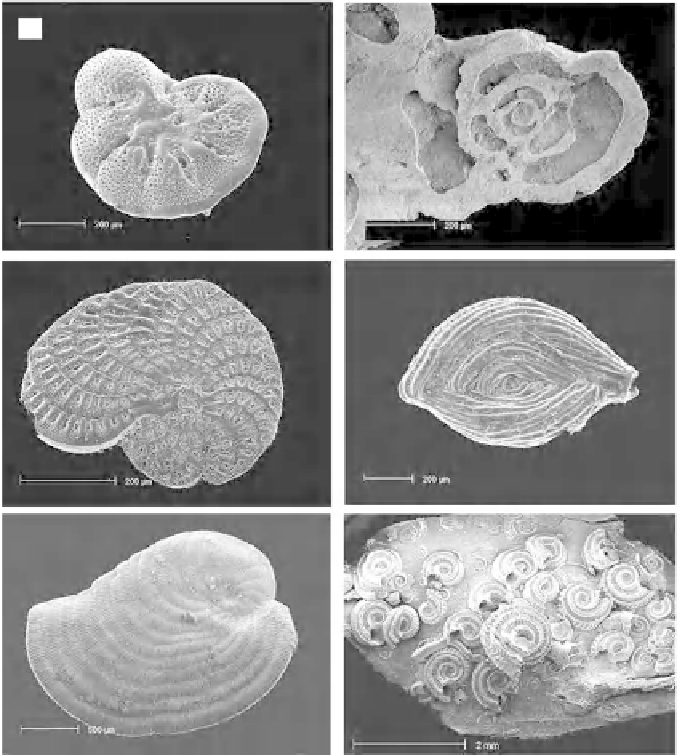Geology Reference
In-Depth Information
(a)
(b)
(c)
(d)
(e)
(f)
Fig. 11.
Scanning electron micro-
scope images of benthic foraminifera
and spirorbid epiphytes. (a)
Discorbis
dimidiatus
, (b)
Nubecularia lucifuga
,
(c)
Elphidium fi chtellianum
, (d)
Spiro-
loculina antillarium
, (e)
Peneropolis
planatus
, (f)
Spirorbis
sp.
(average 164; SD = 107.8 g kg
1
). Chinaman Creek
(Fig. 5) at the head of Spencer Gulf, although hav-
ing the highest biomass of seagrass, has the lowest
abundance of epiphytes per plant (27.8 g kg
1
sea-
grass), probably the result of the extreme salinity
values during summer months. Comparison with
other areas shows a wider range in values from the
minimum-maximum abundance for individual
seagrass species data, but average values lie within
the range of previous studies. Standing stock val-
ues from the tropical grass
Thalassia
, for example,
tend to lie between average values of
Posidonia
and
Amphibolis
, e.g. 0.2-182.9 g m
2
(Frankovitch &
Ziemnan, 1994), 1.19-140.95 g m
2
(Nelsen &
Ginsburg, 1986) and 7.2-48 g m
2
(Land, 1970).
Predominant control on the abundance of epi-
phytes is seagrass biomass (Fig. 13), i.e. the more
seagrass the more surface area for recruitment, the
greater abundance of epiphytes. The relationship
is allometric, i.e there is a constant relationship
between the variables (Fig. 13). This is in contrast
to the fi ndings of Sim (1991). Regression analysis
73 (~1/20). Spirorbids produce ~5% of the
epiphytic carbonate and are most abundant on
A. antarctica
and
P. sinuosa
blades (never on
Amphibolis
stems). Serpulids do not produce
signifi cant carbonate. There is no relationship to
temperature, salinity or depth. The skeleton of
these annelids is aragonite and/or Mg-calcite.
Bivalves
Attached bivalves are present on 47 (~1/30) of the
blades and stems and comprise fi ve species, all of
which are attached by byssal threads.
Epiphyte standing stock
Standing stock of epiphyte carbonate averages
79 g m
2
or 162 g kg
1
of seagrass (Fig. 12; Table 4).
Each of the 21 sites has different abundances
of calcareous epiphytes. Quadrat values range
from 3.06 to 655.6 g m
2
(average 78.7 g m
2
;
SD = 105.1 g m
2
) or 11.21 to 767.32 g kg
1
of seagrass












